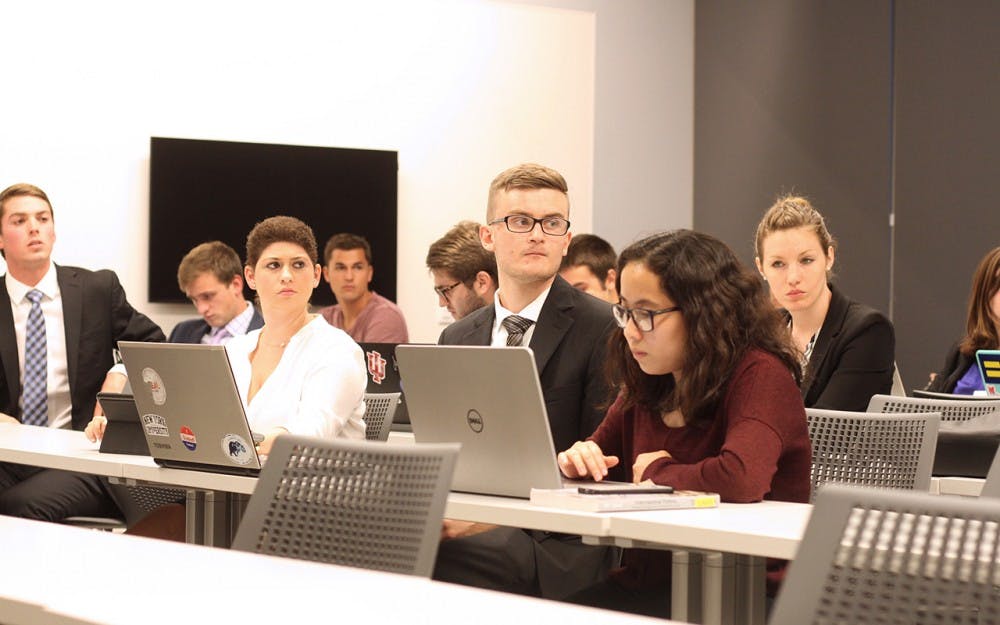The average IU Student Association Congress member is a white male, domestic Kelley School of Business student in his first term, the first demographic survey of Congress representatives concluded.
The survey began Thursday and assessed demographics such as school, ethnicity, gender and terms served. Out of approximately 35 active representatives, 28 members responded. Congress executives intend to use the survey to assess how representative Congress is of the student population and to recruit students for empty Congress seats.
The two most popular schools for representatives were the College of Arts and Sciences and the Kelley School of Business, polling at 34 percent and 30 percent of members respectively, though there are only four allotted seats for business students and eight for Arts and Sciences students. Respondents were also more than 60 percent male, with only 31 percent female representatives. There are no allotted seats for international students, even though they make up 9 percent of the undergraduate population.
Schools like the Kelley School of Business have four assigned representatives, while other schools like The Media School and the School of Global and International Studies only have one seat. Similarly, every dorm is allowed one representative regardless of population.
Tyler Knox, vice president of Congress, and Brandon Sakbun, adviser to the vice president of Congress, acknowledged that there were proportionality issues in the type of student represented in Congress.
Knox said IUSA was actively trying to address representation problems by reaching out to cultural groups on campus and encouraging active Congress members in other clubs to encourage joining.
“This new round of trying to fill Congress seats, we’re definitely looking more into demographics: gender, ethnicities, academic-wise, all those kinds of things,” Knox said. “We’ve reached out to Neal-Marshall, we’ve had students involved in clubs in addition to Congress reach out to their members, so through internal resources, we’re reaching out.”
Knox had not previously been aware that so many representatives came from the Kelley School of Business, though some Congress members had approached him about the gender disparity.
Sakbun had also noticed the trend towards majority populations.
“I look at Congress and I see it’s a little bit more male, it’s a little bit more white, a little more Kelley majors,” he said. “I say these things not because I believe in quotas. I say these things because Congress should represent the population. Underrepresented minorities, gender and sexual minorities, they need a voice.”
Sakbun believed that the heads of various schools and programs could recommend students they believe are qualified who otherwise might not have applied for Congress, but that students should also spread news about open seats to their peers.
“A way to do it is to reach out to faculty around the University,” he said. “Deans, the heads of different scholarship centers. We also try to put it out there through difference social media channels, but a huge thing is for current Congress members to try to reach out to their friends or peers in the classroom.”
He was confident that current Congress representatives could identify capable, diverse new members.
“There are qualified people out there, and it’s our job to find them,” Sakbun said.






